If you travel across the width of China you become lost in a series of very different cultural worlds. In the central and north-west you enter into a Muslim world and to the south west in a Buddhist and Tibetan world. Further south and toward the Indo China borders you are lost in a world of fascinating minority groups. China is indeed a series of countries within one country with a breathtaking diversity of populations, ethnicities and cultures together with starkly contrasting landscapes of fertile plains and terraced paddy fields fed by massive river systems, unimaginably vast deserts and soaring arid mountains. These contrasts never fail to surprise us.
Our flight to Urumqi in the Xinjiang Province in the far north west of China was fascinating
. The flight rapidly departed the densely populated city of Shanghai and soon we were over rich terraced rice paddy fields - a far departure from the modern city skyline of Shanghai. And then the flight took us over the Gobi Desert on the edge of Mongolia, flanked by the mighty Taklamakan Desert, its name meaning "you go in, you don't come out". Having spent some days on our 2007 trip travelling by train and bus through this massive desert, the ominous name is quite appropriate. The flight then passes further over the massive arid Tian Shan Mountain range that soars in huge parallel waves well above the tree line toward the Xinjiang capital city of Urumqi.
Xinjiang, known as East Turkestan by the local Uighur population, is yet again another country within a country. Bigger than Alaska, it consumes about one sixth of China's entire territory. It borders with the eight countries of Russia, Mongolia, Kazakhstan, Kyrgyzstan, Tajikistan, Afghanistan, Kashmir and Pakistan. With a long history of dissent and a largely Muslim population desperately wanting independence, it is no wonder that Chinese authorities are concerned about its close geographic proximity to neighbouring Muslim nations, especially the more militant countries of Afghanistan and Pakistan. And sadly there is always underlying racial tension in Xinjiang Province between the fiercely proud Uighur peoples, the Han Chinese people and the Chinese authorities
.
But for us, Xinjiang Province is a simply fascinating place to visit. The arid and forbidding countryside oozes with the rich history of the Silk Road and it was the lure of these ancient trading routes that led us on our first travels here in 2007. And the seduction for this journey was to explore further west along the Silk Road routes from China into Uzbekistan, Kyrgyzstan and then into Pakistan. We were desperately keen to explore more of the painted faces of these fabulous trading routes.
We used Urumqi once again as a base for our forward travels, this time to Uzbekistan and Kyrgyzstan and again as a restful stopover on our journey home from Pakistan. We love the city for its atmosphere, friendly people, intriguing Uighur markets and for the wonderfully comfortable and fabulous Hoi Tak Hotel. It has always made for us an easy and restful place to stay (little did we know that just two weeks after our stay there on our return journey the dreadful and deadly riots broke out between the Uighurs and the Han Chinese
. And they happened quite close to our hotel and near the usually relaxed and beautiful Renmin Square).
Strategically located at the hub where the Trans Siberian railway route departs in the north for Russia and in the south to the frontier city of Kashgar, Urumqi is a city of some 1.5 million people. In the distance is the magnificent snow capped Tian Shan Mountain Range. The city lies in a formidably cold and hostile desert landscape, yet the city looks thriving and prosperous. The parks were green, covered with flowering petunias and the streets were clean and well maintained. The city is a fascinating melting pot of Uighur and Han Chinese peoples and modern sky scraper buildings sit side by side with mosques, old city housing and fabulous bazaars.
The most striking feature of Urumqi, and of other cities in the far west of China, is that most of the people no longer look at all Chinese. They are of course not Chinese but are mostly of the minority Uighur group
. And indeed, the Uighur people do not regard their part of the world as China but as their native East Turkestan. To us the Uighur people look more Central Asian in appearance and culture. The people are of medium to large build with dark complexions and broad friendly faces. Veiled Uighur women, elegantly dressed in beautiful and bright long flowing gowns and men in traditional pointed pill box style hats walk the streets next to young modern people in expensive designer outfits or jeans and T shirts. Interestingly, we saw very few fully veiled women in Urumqi.
In central Urumqi, Buiks, Mercedes and a huge array of large four wheel drive cars revealed a prosperity enjoyed by the wealthier inhabitants of Urumqi. In fact it was staggering to see the number of extremely expensive cars and the number of designer wear shops and huge cosmetic and perfume sectors of the Urumqi department stores. This part of Urumqi certainly is in stark contrast to the abject poverty we saw on the outskirts of the city during our first visit to Urumqi by bus from Turpan in 2007.
Our room in the Hoi Tak Hotel did not disappoint us. It was a beautifully appointed corner suite looking right across the city to the snow capped Tian Shan Mountains. In front of our hotel was the lovely (and then) peaceful Renmin Park, and as always inhabited by ambling local families and in the morning people exercising or walking their dogs. Unlike our last visit in the autumn of 2007, this was spring and the city was green and vibrant.
As usual, our first mission was to buy some local wine. The Hotel is conveniently located opposite the Tian Shan Department Store and we were soon back at our hotel, sipping our first blissful drop of local Loulan red wine. Our stay in Urumqi was a great start for our adventures into Central Asia.
Across China to the Far City of Urumqi
Tuesday, May 19, 2009
 Urumqi, China
Urumqi, China
Other Entries
-
1From Crowdy Head to Sydney - Our Adventures Begin
May 154 days prior Crowdy Head, Australiaphoto_camera0videocam 0comment 1
Crowdy Head, Australiaphoto_camera0videocam 0comment 1 -
2Sydney Airport - Well, Here we go Again!
May 163 days prior Sydney, NSW, Australiaphoto_camera2videocam 0comment 0
Sydney, NSW, Australiaphoto_camera2videocam 0comment 0 -
3Our Beloved Shanghai Again
May 163 days prior Shanghai, Chinaphoto_camera8videocam 0comment 0
Shanghai, Chinaphoto_camera8videocam 0comment 0 -
4Across China to the Far City of Urumqi
May 19 Urumqi, Chinaphoto_camera7videocam 0comment 0
Urumqi, Chinaphoto_camera7videocam 0comment 0 -
5Tashkent - A Lesson in Uzbekistan Bureaucracy!
May 201 day later Tashkent, Uzbekistanphoto_camera12videocam 0comment 1
Tashkent, Uzbekistanphoto_camera12videocam 0comment 1 -
6From Tashkent to the Historic City of Khiva
May 212 days later Khiva, Uzbekistanphoto_camera9videocam 0comment 1
Khiva, Uzbekistanphoto_camera9videocam 0comment 1 -
7Across the Kyzylkum Desert to Bukhara
May 223 days later Bukhara, Uzbekistanphoto_camera6videocam 0comment 0
Bukhara, Uzbekistanphoto_camera6videocam 0comment 0 -
8Our Stay In the Beautiful City of Bukhara
May 234 days later Bukhara, Uzbekistanphoto_camera8videocam 0comment 0
Bukhara, Uzbekistanphoto_camera8videocam 0comment 0 -
9Day One in The Romantic and Fascinating Samarkand
May 256 days later Samarkand, Uzbekistanphoto_camera8videocam 0comment 1
Samarkand, Uzbekistanphoto_camera8videocam 0comment 1 -
10Shakhrisabz - Home of Tamerlane
May 267 days later Tashkent, Uzbekistanphoto_camera5videocam 0comment 0
Tashkent, Uzbekistanphoto_camera5videocam 0comment 0 -
11Our Tour of Samarkand
May 278 days later Samarkand, Uzbekistanphoto_camera8videocam 0comment 0
Samarkand, Uzbekistanphoto_camera8videocam 0comment 0 -
12From Samarkand to Tashkent
May 289 days later Tashkent, Uzbekistanphoto_camera0videocam 0comment 0
Tashkent, Uzbekistanphoto_camera0videocam 0comment 0 -
13Tashkent to Bishkek, Kyrgyzstan
May 2910 days later Bishkek, Kyrgyzstanphoto_camera0videocam 0comment 0
Bishkek, Kyrgyzstanphoto_camera0videocam 0comment 0 -
14Our Introduction to Kyrgyzstan
May 2910 days later Bishkek, Kyrgyzstanphoto_camera5videocam 0comment 0
Bishkek, Kyrgyzstanphoto_camera5videocam 0comment 0 -
15From Bishkek to Lake Issykul
May 3011 days later Issykul, Kyrgyzstanphoto_camera7videocam 0comment 0
Issykul, Kyrgyzstanphoto_camera7videocam 0comment 0 -
16Issykul to Kochkor
May 3112 days later Kochkor , Kyrgyzstanphoto_camera12videocam 0comment 0
Kochkor , Kyrgyzstanphoto_camera12videocam 0comment 0 -
17From Kochkor to Tash Rabat
Jun 0113 days later Tash Rabat, Kyrgyzstanphoto_camera11videocam 0comment 0
Tash Rabat, Kyrgyzstanphoto_camera11videocam 0comment 0 -
18From Tash Rabat to the Torugat Pass and Into China
Jun 0214 days later Kashgar, Chinaphoto_camera9videocam 0comment 0
Kashgar, Chinaphoto_camera9videocam 0comment 0 -
19Over the Torugat Pass and onto Kashgar
Jun 0214 days later Kashgar, Chinaphoto_camera0videocam 0comment 0
Kashgar, Chinaphoto_camera0videocam 0comment 0 -
20Cashless in Kashgar
Jun 0214 days later Kashgar, Chinaphoto_camera6videocam 0comment 0
Kashgar, Chinaphoto_camera6videocam 0comment 0 -
21Down the Karakoram Highway Once Again
Jun 0315 days later Tashkurgan, Chinaphoto_camera8videocam 0comment 0
Tashkurgan, Chinaphoto_camera8videocam 0comment 0 -
22Two Blissful Days In Tashkorgan
Jun 0315 days later Tashkorgan, China, Pakistanphoto_camera13videocam 0comment 3
Tashkorgan, China, Pakistanphoto_camera13videocam 0comment 3

 Urumqi, China
Urumqi, China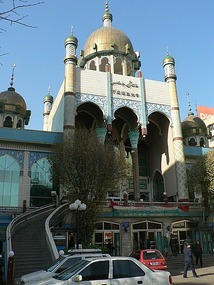
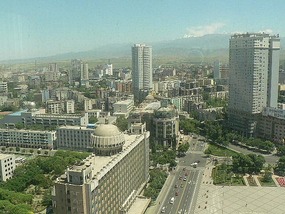
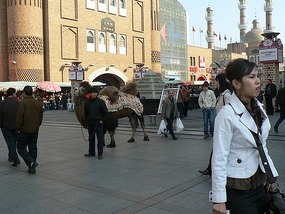
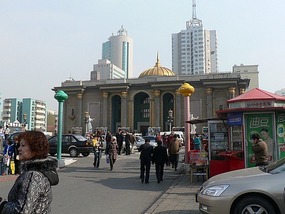





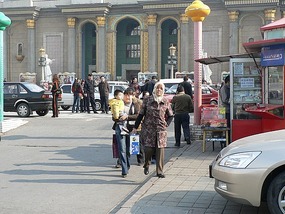
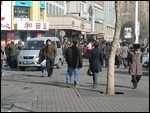
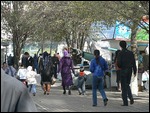
2025-05-23